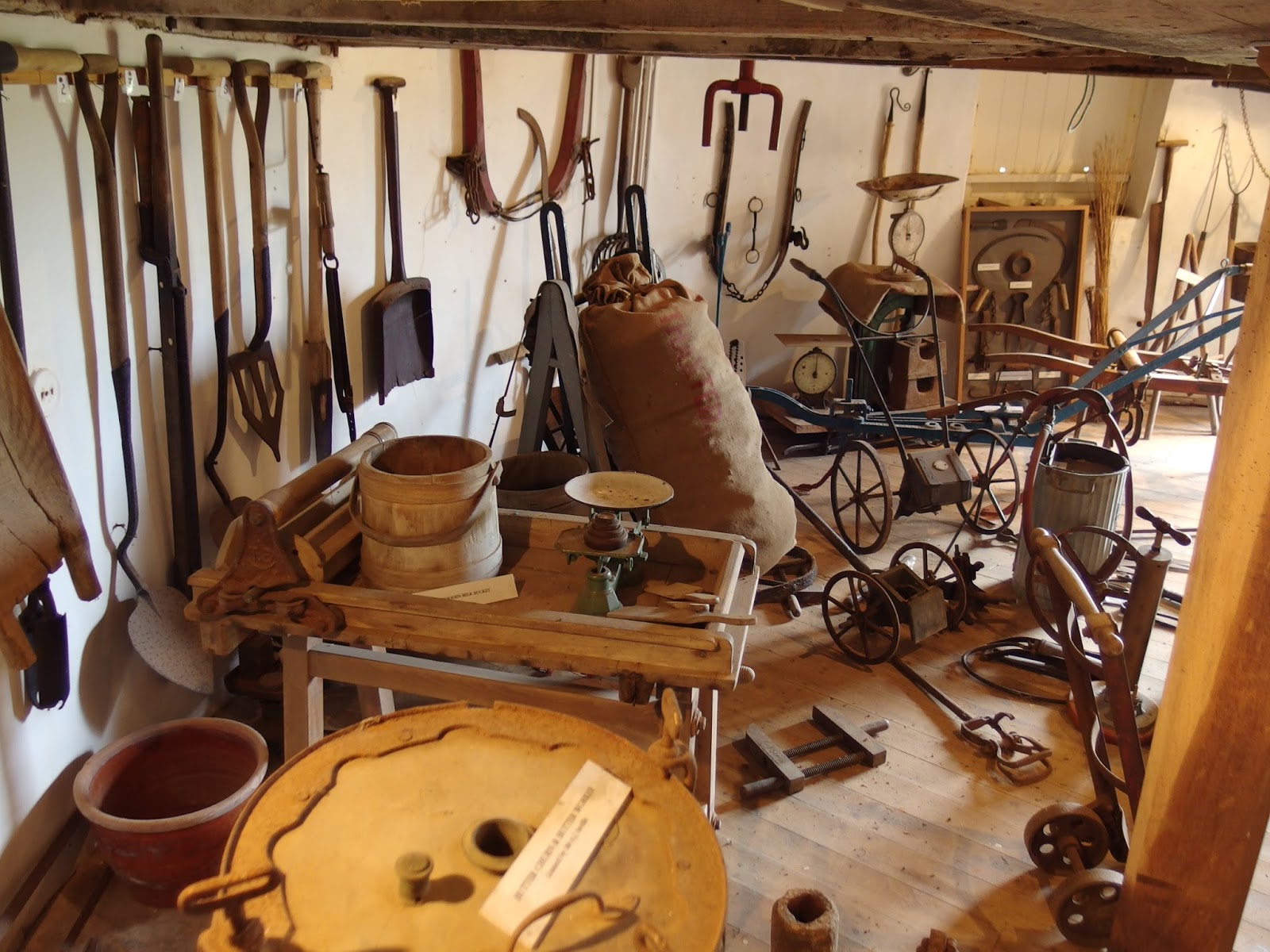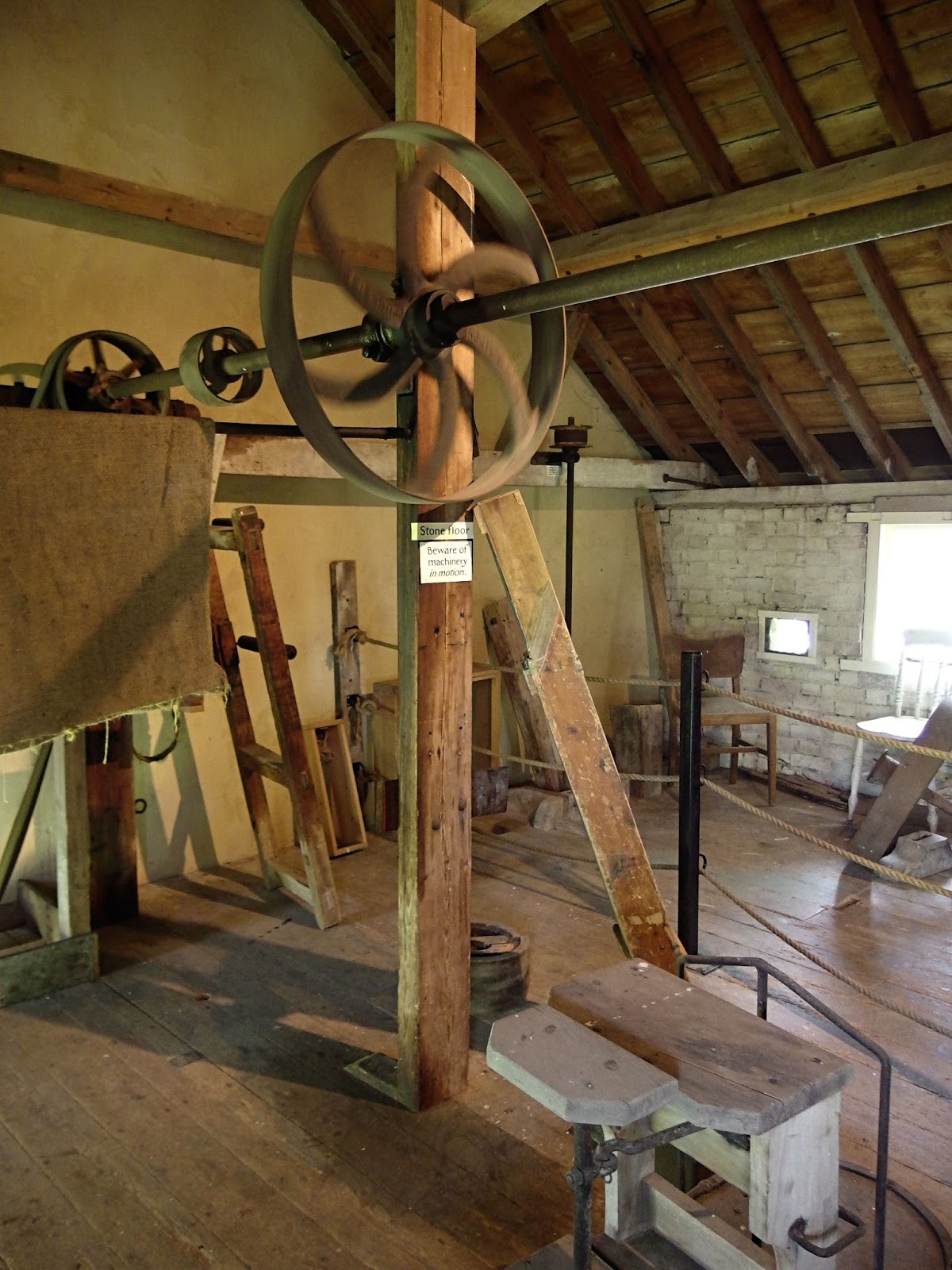John Webb's Windmill, Thaxted
Thaxted windmill beckons from afar. Standing on top of what counts as a hill in East Anglia its outline is clear to be seen on the horizon for miles around. But, if it beckons you, you'd do well to follow my example and visit on a Saturday afternoon during summer 'cos that's when it's open to visitors. There's no set admission charge but there is a jar for donations.
The mill is framed nicely by The Almshouses, both of which at one time housed the elderly and homeless of the parish. The thatched building on the left was built originally for a priest but later became almshouses. By the early years of the twentieth century it had become uninhabitable but was rescued by Conrad Noel from complete destruction. On the right are the more modern (built in 1714!) almshouses which in 1830 housed no less than sixteen people but now forms three dwellings for elderly couples.
Once inside the windmill you are confronted by a bewildering array of ancient implements which tell a rather jumbled tale of the town's past.
The height of the sophistication in the kitchen of yesteryear!
Carpentry tools....and then a rather mixed display cabinet...
I've enlarged the photo so you can read about it yourself - it seems that at least some of the poor of the town were not completely unable to help themselves.
A narrow ladder leads those who are fit enough, and slim enough, up into the workings of the mill.
Eventually, after a bit of huffing and puffing you emerge into the top chamber of the mill....
....where you can also enjoy the view out into the surrounding countryside...
Hinxton Watermill
The following day I noticed that the watermill at Hinxton was open to visitors as it is on the first Sunday of all the summer months. It is in the care of Cambridge Past Present & Future (click on the link to go to their website and check opening times on this and other places they look after).
You can visit the outside of the building at any time as there's a public footpath leading around it. The present mill was built in the seventeenth century but there has been a mill on the site much longer. There was a mill here at the time of the Domesday Book - it was valued at eight shillings. By the mid 1980s the building was derelict, which was when CPPF stepped in to save it.
Like the windmill there are ancient implements to be viewed as well as the mill machinery. And, as this is a watermill, it can usually be seen working on open days.
It is reckoned that, with everything working and a good water flow, a ton or so of grain could be milled in a day. It was hard and dangerous work though with the constant threat of machinery overheating and a fire breaking out. I've often noticed when going around old mills that many of the cogs of the machinery are made of wood rather than iron. Apparently this is "a safety feature" - if the machinery jammed for any reason then the wooden teeth would just snap off preventing further damage.
The site of the mill was very carefully chosen all those centuries ago; it stands on a bend in the river where the land is slightly higher and only rarely subjected to flooding. For all its completeness this mill seemed to lack one important component: there is no waterwheel. Apparently the waterwheel had been removed and replaced with a turbine before the mill fell into disrepair and it was decided to keep it when the building was renovated.
Having looked around and seen the turbine on the way out I wandered down to the village hall where a cup of tea and a piece of cake could be had for a reasonable price. Very good it was too!
Take care.
















another interesting post John; the intro' photo a beauty! Enjoyed looking over the farming and other implements of the day, and the view out the windows reminded me of many on Escape to the Country...
ReplyDeleteThat windmill at Thaxted brought back so many happy memories for the farmer and me. He just looked at it over my shoulder and reminded me that when we were there the wind had blown off the sails and they were being repaired.
ReplyDeleteLearned something again. I did not know that was why wood cogs. Just thought it was cheaper or beyond their current sate of technology at the time if the mill was very old.
ReplyDeleteTwo very interesting places by the look if it, and tea and cake afterwards sounds perfect!
ReplyDeleteVery interesting old mills.
ReplyDeleteNicely told and photographed as usual, John. I didn't know that about wooden cogs either - interesting stuff!
ReplyDeleteI like the windmill but then again I like the watermill - I just love mills. Tea and cake after a visit sounds just what is needed too:)
ReplyDeleteI bet they weren't nearly so clean and picturesque back in their days of steady use! Excellent restoration work and a gift to those of us who love history. Thank you for the great post, John--I believe we saw the Thaxted windmill while we were over there? but from a distance. Nice to see it closer up.
ReplyDeleteI had no idea until recently that there were windmills in England. Were they common or rare?
ReplyDeleteI love the handwritten signs on the old implements in the frame.
Liked the description of your alms houses. Here we called them old folks homes but to my knowledge I don't think we have any today. Interesting post -- barbara
ReplyDelete